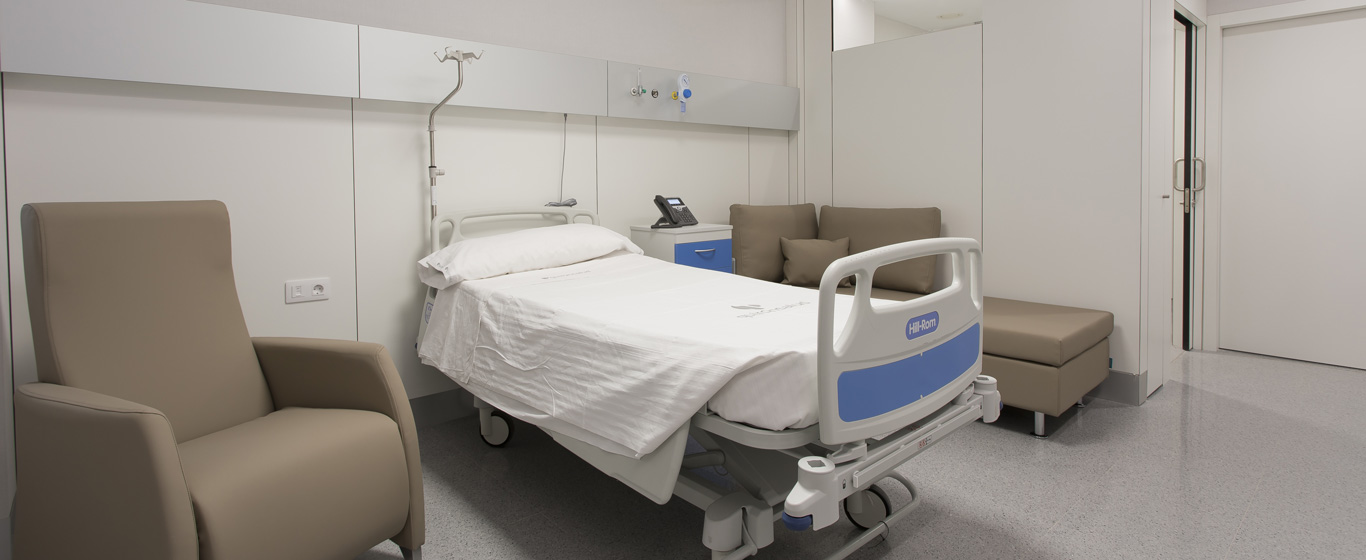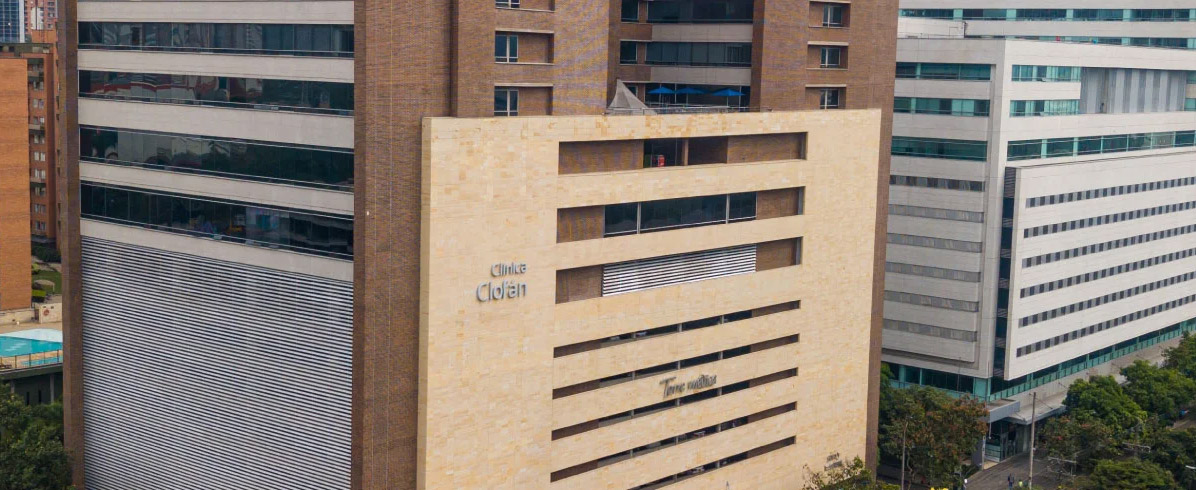Dry Eye
What causes ocular dryness? All the information on dry eye: causes, symptoms, and treatment.
Symptoms and Causes
Dry eye syndrome occurs when the eyes do not produce enough tears to stay lubricated, or when the tears have an abnormal composition that prevents them from performing their function properly.
The tear film spreads over the eye with each blink and is essential for maintaining ocular surface health. It consists of three layers:
- Outer or lipid layer: Smooths the tear surface and slows evaporation. It is produced in the Meibomian glands, located along the eyelid margin where the eyelashes emerge.
- Middle or aqueous layer: The most visible part of the tear, responsible for cleaning the eye of external particles. It is formed in the lacrimal glands, located above the eyeball.
- Inner or mucin layer: Helps spread and adhere the aqueous layer over the eye’s surface to keep it moist. It is produced in the conjunctival membrane, the transparent tissue covering the sclera (the white part of the eye) and the inside of the eyelids.
Depending on which tear layer is affected, dry eye is classified into two types:
- Aqueous-deficient dry eye (keratoconjunctivitis sicca): Insufficient production of the aqueous layer of the tear. This leads to the accumulation of dissolved substances in the tear, causing corneal inflammation.
- Evaporative dry eye: Decreased lipid layer production or faster evaporation of this layer, causing the aqueous layer to evaporate more quickly and leading to corneal inflammation.
Dry eye is a very common condition that often affects both eyes and, in some cases, becomes a long-term disorder with symptoms that may not completely disappear.
Symptoms
The most common symptoms of dry eye include:
- Foreign body sensation in the eyes
- Itching, burning, or stinging sensation
- Redness
- Mucus in or around the eyes
- Eye fatigue or fluctuating blurry vision, especially when reading
- Light sensitivity
- Excessive tearing: a reflex response to compensate for insufficient hydration
- Pain or discomfort when wearing contact lenses
Causes
Dry eye syndrome is a multifactorial disorder with various possible causes:
Causes of Aqueous-Deficient Dry Eye:
- Aging: Tear production decreases with age, especially in postmenopausal women.
- Certain autoimmune diseases, such as Sjögren’s syndrome, rheumatoid arthritis, lupus, scleroderma, graft-versus-host disease, or sarcoidosis.
- Thyroid disorders.
- Allergic eye diseases.
- Vitamin A deficiency.
- Certain medications, such as antihistamines, diuretics, beta-blockers, anxiolytics, antidepressants, antacids, hormonal supplements, or contraceptives.
- Prolonged use of contact lenses.
- Laser refractive eye surgery.
Causes of Evaporative Dry Eye:
- Posterior blepharitis: Meibomian gland dysfunction.
- Skin disorders: Such as rosacea.
- Reduced blinking frequency: Due to conditions like Parkinson’s disease or prolonged activities such as screen use, reading, or driving.
- Eyelid abnormalities: Such as ectropion (outward-turning eyelid) or entropion (inward-turning eyelid).
- Environmental factors: Wind, smoke, or dry air.
- Vitamin A deficiency.
- Ocular allergies.
Risk Factors
The main risk factors for dry eye syndrome include:
- Age: Tear production decreases after age 50.
- Gender: More common in women.
- Pregnancy, menopause, or hormone treatments.
- Vitamin A-deficient diet.
- Daily contact lens use.
- Extended screen exposure.
Complications
Ocular dryness increases the risk of infections, as tears serve as a protective barrier on the eye’s surface. In severe cases, corneal inflammation can lead to corneal abrasions or ulcers, potentially causing vision loss.
In chronic cases, neuropathic pain may develop, characterized by persistent nerve stimulation on the ocular surface, leading to intense pain and sensory disturbances that persist even when ocular dryness is treated.
Prevention
Several measures can help prevent dry eye syndrome:
- Protect the eyes from air currents: Avoid direct exposure to hairdryers, air conditioning, fans, or car heating systems. In windy environments, use protective wraparound glasses.
- Avoid smoky environments.
- Minimize tear evaporation in dry environments: Close the eyes frequently or use a humidifier indoors.
- Rest the eyes during prolonged visual tasks: Blink frequently or close the eyes for a few minutes when reading or using a computer.
- Use artificial tears.
- Increase dietary vitamin A intake.
What Doctor Treats Dry Eye?
Dry eye syndrome is diagnosed and treated by ophthalmologists.
Diagnosis
Common diagnostic tests for dry eye syndrome include:
- Slit-lamp examination: After applying special drops to highlight the tears, the eye and eyelid are observed under a microscope with an integrated light to detect corneal inflammation or Meibomian gland dysfunction.
- Schirmer’s test: Measures tear production by placing a filter paper strip in the lower eyelid to quantify tear absorption over a specific time.
- Tear break-up time test: Evaluates how long the tear film remains stable after blinking. A small amount of dye is applied, and the patient blinks to spread it before keeping the eyes open to measure the duration of the tear film.
- Tear osmolarity test: Analyzes a tear sample to measure salt and water concentration. High salt concentration indicates aqueous-deficient dry eye.
- Biomarker analysis: Measures levels of proteins and enzymes, such as albumin or matrix metalloproteinase-9, which are elevated in inflammation.
Treatment
Treatment for dry eye varies based on severity and cause. Possible options include:
- Warm compress application: Heat helps unblock Meibomian glands.
- Medications:
- Artificial tears: Frequent application keeps the eyes lubricated. Gels or ointments may also be used. Preservative-free tears are recommended to avoid irritation.
- Tear production stimulants: Cholinergic drugs such as pilocarpine or cevimeline increase tear production.
- Anti-inflammatory medications: Reduce inflammation of the Meibomian glands, administered orally or topically.
- Immunosuppressants or corticosteroids: Reduce corneal inflammation, applied as eye drops.
- Autologous serum eye drops: Made from the patient’s blood, used for severe cases unresponsive to other treatments.
- Intense pulsed light therapy: Targets vascular structures in the eyelid to reduce inflammation and improve gland function.
- Scleral lenses: Special contact lenses that retain moisture and delay tear evaporation.
- Surgical treatments:
- Punctal plugs: Block tear drainage to retain moisture.
- Thermal cautery: Permanently closes tear ducts using heat.
- Eyelid surgery for conditions like ectropion or entropion.


































































































